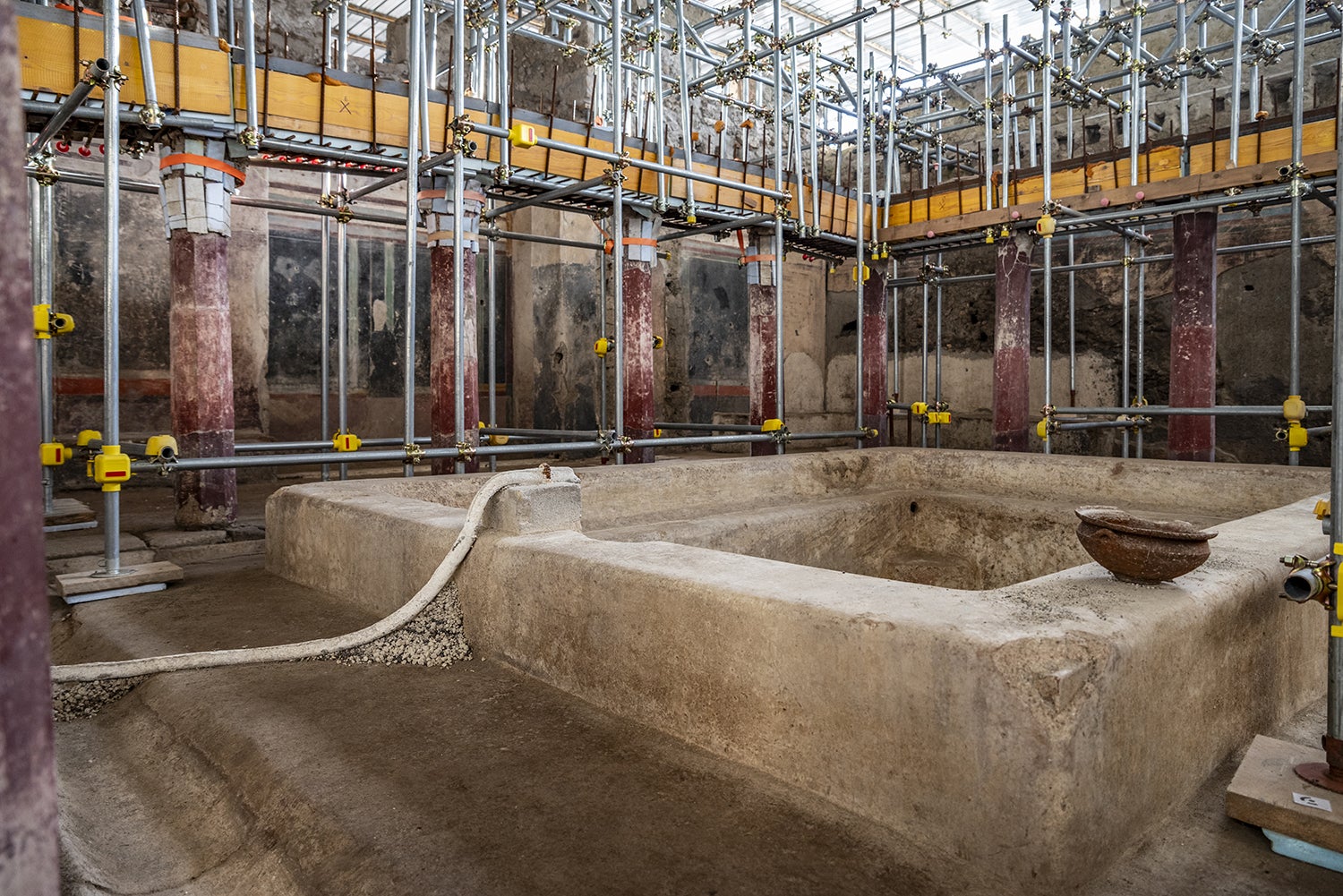A volcanic explosion every 15 minutes: how Australia’s museums are turning to tech to lure us in
Share:
Museums are using VR and immersive experiences to boost attendances – and, while it can provide an amazing spectacle, critics say it can be an expensive distraction. It starts with a low rumble, then an explosion and a deafening roar. A pyroclastic flow bursts from the volcano and hurtles towards us at a frightening speed. Showers of ash appear to pummel the space around us – well technically, it’s a pumice lapilli unique to Mount Vesuvius – and, for a few minutes, visitors to the National Museum of Australia are in Pompeii 1,946 years ago.
![[Kelly Burke]](https://i.guim.co.uk/img/uploads/2022/02/24/Kelly_Burke.png?width=75&dpr=1&s=none&crop=none)
Immersive experiences, including increasingly sophisticated virtual reality technology, have gone from gimmick to essential component of blockbuster museum exhibitions, despite criticism from scholarly quarters that whiz-bang special effects can distract viewers from the actual artefacts and exhibits, and are training a future generation to assume entertainment is the primary function of museums.
![[Visitors at the Ramses & the Gold of the Pharaohs exhibition at the Australian Museum]](https://i.guim.co.uk/img/media/fc76afdcdaf556d26b1b3b465d44cf78dde19547/0_0_3500_2333/master/3500.jpg?width=445&dpr=1&s=none&crop=none)
Sign up for a weekly email featuring our best reads. Laurent Dondey, the head of development and international touring for Grand Palais Immersif – the French company behind Pompeii – says he understands some of the criticism of immersive tech in museums.
![[Casts of the bodies found in Pompeii]](https://i.guim.co.uk/img/media/f860712606e94e275a6f73bf19c6ecafb52fc894/0_0_4000_2661/master/4000.jpg?width=445&dpr=1&s=none&crop=none)
“I am sorry, but I do not want to see Van Gogh smoking or scratching his head,” he says. “What we do is part art, part science … technology is part of the creative process that surprises the public and can bring another layer of experience that, yes, is a little fun too.”.
![[Inhabitants of Pompeii walk on the walls of the National Museum of Australia]](https://i.guim.co.uk/img/media/abe875bd86a8775ec8b44405e0b9c900498947c9/0_0_4000_2661/master/4000.jpg?width=445&dpr=1&s=none&crop=none)
In Pompeii, which has opened at Canberra’s National Museum of Australia, Mount Vesuvius does its thing every 15 minutes. The immersive experience is included in the ticket price but in other blockbusters staged in Australia, where the technology demands individual headsets and seating, there is an add-on fee which can mean that the cost of a day at the museum for a family runs into hundreds of dollars.






















